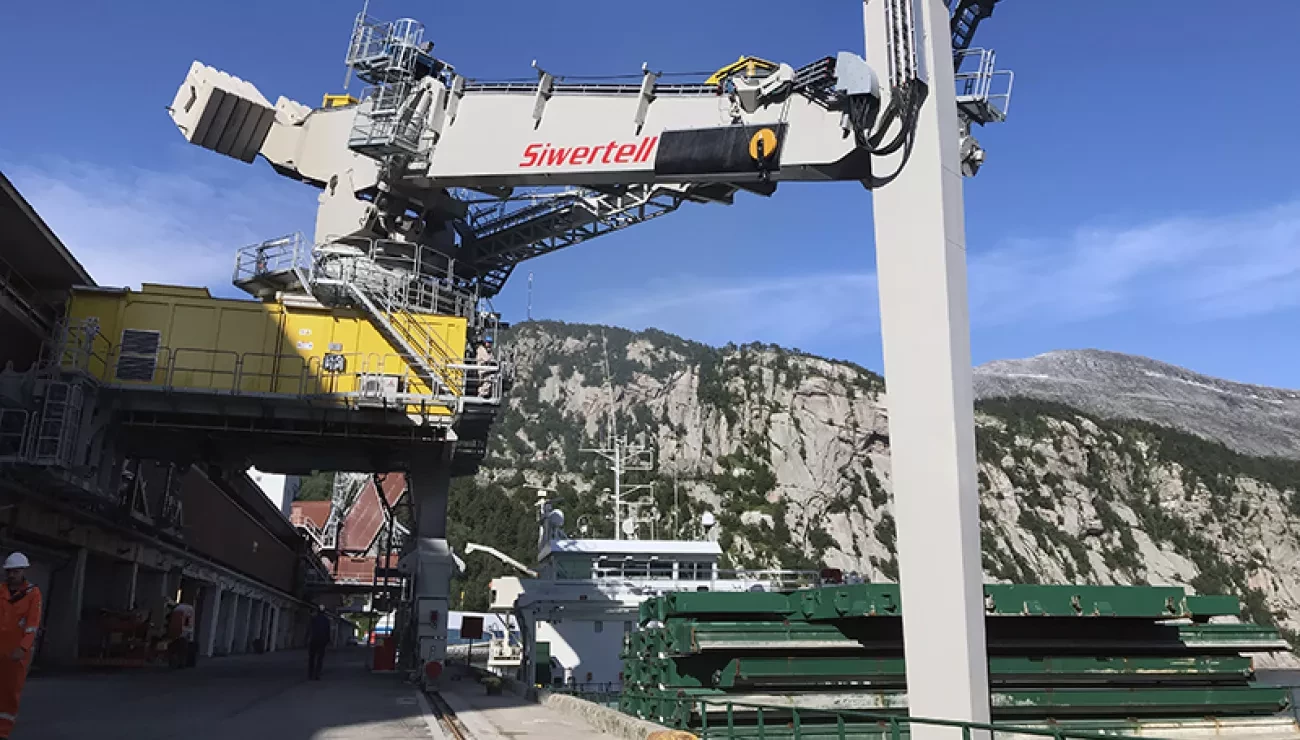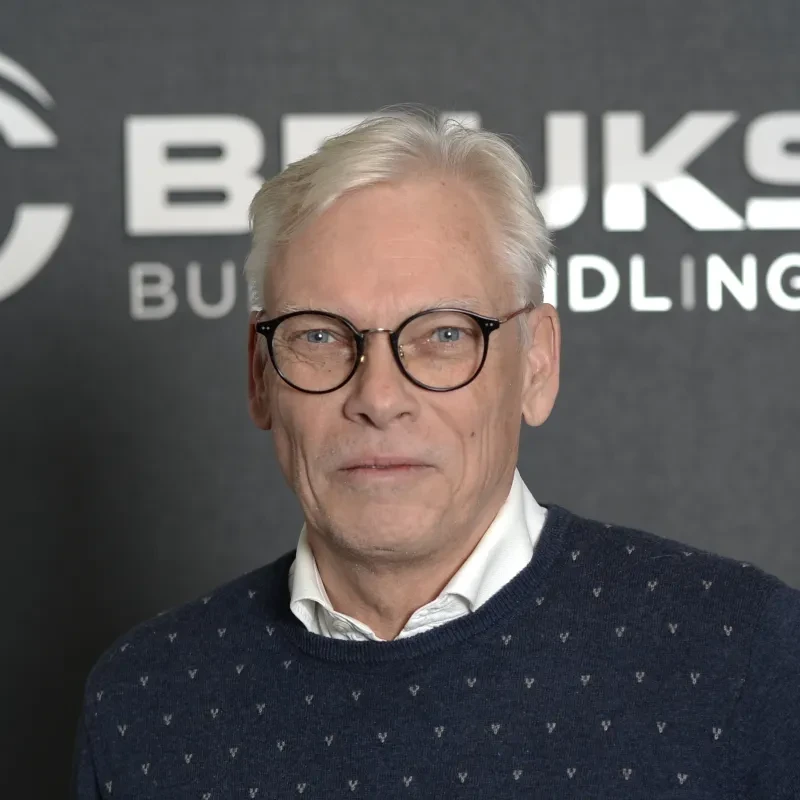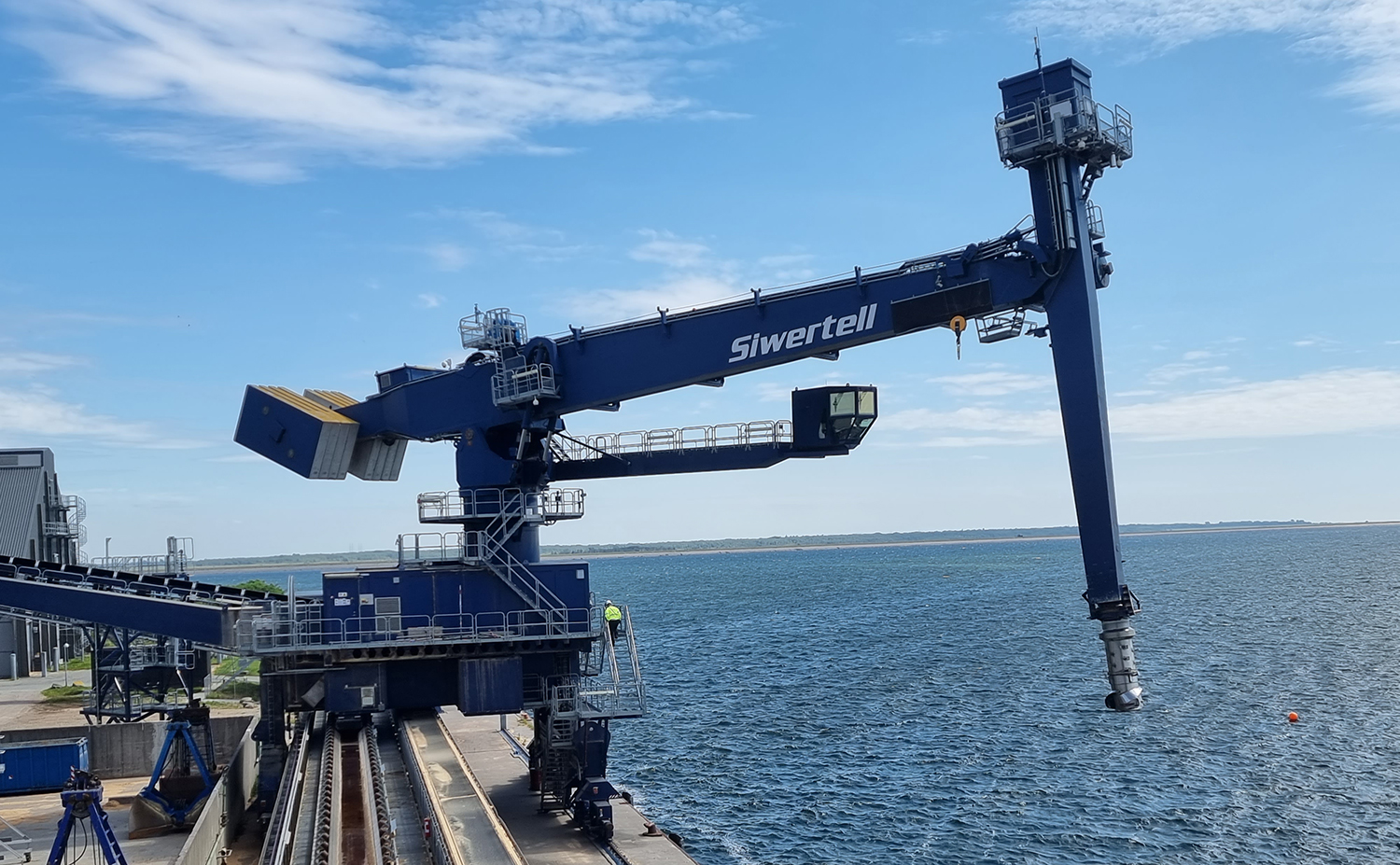
Improved screw-conveyor lifetimes deliver direct cost savings
9 Sep 2022How long does new equipment last? Businesses often pay much more attention to the answer to this question than their end consumers might. Considering through-life costs, when machinery is earmarked for decades of operation, is a very wise strategy, as this could mean vast cost savings for a terminal over equipment lifetimes.
Siwertell unloaders have a global reputation for reliability and service longevity, and their component screw conveyors offer some of the market’s longest wear times. However, Bruks Siwertell recognizes that any improvements to component lifetimes directly delivers profitability to an operation through reduced maintenance costs. With this in mind, the company has embarked on several key research and development (R&D) projects, and one, in particular, has recently come to fruition.
The program, which began in 2021, involved analyzing key elements of the vertical screw conveyor; given its critical role in Siwertell dry bulk handling technology. The results are extremely positive, extending its service life even further. Bruks Siwertell’s entire portfolio of new and existing screw-type equipment including Siwertell ship unloaders, loaders and conveyors, can now benefit.
The vertical screw conveyor is totally enclosed and built up from screw sections, outer tubes and intermediate bearings. In ship unloaders, the vertical screw conveyor elevates bulk material from below the cargo level in the hold up to the horizontal conveyor.
Screw-type conveyors have minimal energy consumption demands, and already provide excellent through-life efficiencies, as they have few moving parts, and free-flowing cargo throughput under continuous torque loads. This generates predictable patterns of wear-and-tear.
New ways of thinking
“Although these are already great products, the starting point of this R&D project was to not assume anything; we really questioned already proven designs and processes to see if they could be improved and updated, and invariably they could,” says Per Hansson, Sales Director, Bruks Siwertell.
“Throughout the program, several different configurations of vertical screw unloading were tested, incorporating variations in production methods and materials used to make the parts. The aim: to provide a major increase in the length of maintenance intervals, based on the circumstances they face in real-world conditions, and without a corresponding increase in costs for customers. The testing leveraged the latest breakthroughs in materials science.
“Every element has been carefully considered and verified, prior to products being available on the market,” Hansson continues. “The result is an advanced solution that offers the best of previous generations in a more resilient package, with lower operator costs. It also benefits the environment. The very concept of ‘sustainability’ encompasses keeping existing equipment and components running for longer and therefore not incurring the requirement for machinery to be replaced as often.
“As well as considering alternative production methods and techniques, we reviewed the entire supply chain. This has enabled shorter lead times and has resulted in making the entire chain more effective and environment-friendly as well,” he highlights.
A tough sector to choose
The grain handling market was taken as the program’s core segment for analysis. “This was for numerous reasons,” Hansson explains. “Thanks to the tremendous growth in the agri-bulk segment over the last few years, grain is now the third largest cargo that Bruks Siwertell machines handle, so we have a lot of knowledge in this area.
“The grain handling sector demands an incredible amount from its dry bulk handling equipment, not only in terms of intensity, but it is also an extremely competitive market that places substantial expectations on component lifetimes and through-life costs. What better sector then to use as a basis?”
Siwertell screw-type ship unloaders can discharge grain and other agri-bulk commodities at rated capacities up to 1,800t/h. Our grain-handling attributes also include the highest continuous rated loading capacities, which are in excess of 3,000t/h.
“We have grain, soya bean and soya meal handling systems operating in Brazil that run up to 4,000 hours/year,” Hansson notes. “These systems work to some of the agri-bulk industry’s tightest seasonal schedules, with import and export terminals subject to massive surges in intake from the seasonality of crop harvests. There is no capacity for any unplanned downtime.
“In this region, many of our customers are dependent on their Siwertell screw-type ship unloaders being able to handle one year’s full intake of grain,” he stresses. “Several customers do not have any other equipment to unload incoming material or their supplementary equipment is simply not suitable, as grain unloading has to happen so quickly and frequently, only their Siwertell unloader is up to the task.
“These very high-use conditions naturally have an inevitable impact on wear parts. When combined with the remoteness of some of these operations, many of these customers often carry a large stock of critical spare parts, minimizing the risk of unexpected stoppages. However, being able to offer longer screw conveyor lifetimes ensures a better balance between cost and component longevity, so we can meet the needs of this sector in a more effective way,” Hansson says.
The advantages of original
The R&D program, and the significant advantages offered by these longer component lifetimes, highlight the substantial rewards of choosing original equipment manufacturer (OEM) parts, in particular.
Decades of investment, expertise and knowledge are channeled into Bruks Siwertell’s product development, and this is a continuous process, delivering truly compatible wear components that are guaranteed to offer the very best reliability, longevity and operational performance.
OEM parts are intrinsically valuable along with OEM labor, service support, and tailored training programs.
As the Siwertell operators in Brazil highlight, a robust service strategy pays dividends. They can plan for the availability, purchase and budgeting of any spare parts that are needed and have it available at these service intervals; planned maintenance is almost always less expensive than emergency support.
The enhanced durability and wear resistance means that screw components do not have to be replaced so often. This delivers longer, reliable equipment availability, and longer periods between servicing, so fewer services are required.
Simplified screw replacements
When it is time to replace screw-components, Bruks Siwertell has already made this easier with the introduction of a new self-supporting service tower that substantially simplifies and lowers the cost of fitting replacement screws on its market-leading Siwertell ship unloaders.
Principally, it eliminates the need for cranes, which are traditionally used to lift the screws. This reduces costs and improves the overall safety of the operation. Also, because the tower is specifically designed for the task, the whole process is faster.
A replacement screw is placed and fitted into the tower’s lowered screw-holding cradle, specifically matched to the dimensions of the screw. A winch raises the cradle and screw into an upright position. When in place, the new screw is locked into position and the outer diameter bearing wings are assembled. The same procedure is repeated with the next screw section. Removal and disassembly of the screws is achieved using the same equipment, but in reverse.
By using adaptors, the service tower can accommodate the various screw lengths and sizes of the Siwertell product range. Also, although specifically designed for screw replacements, it can be built with additional levels to service and inspect other areas of the vertical conveyor.
R&D offers wide benefits
Bruks Siwertell’s commitment to improve owner benefits, set ever higher standards for intelligent solutions, and drive positive, sustainable change, mean that this R&D program is one of many that are underway.
“It is exciting to think of all these progressive changes, and how research, science and innovative thinking, through collaborations, can result in tangible product advances that not only have a direct positive impact on our customers, but also the environment,” concludes Hansson.
PLEASE CONTACT US FOR MORE INFORMATION

 Bruks-Siwertell
Bruks-Siwertell
